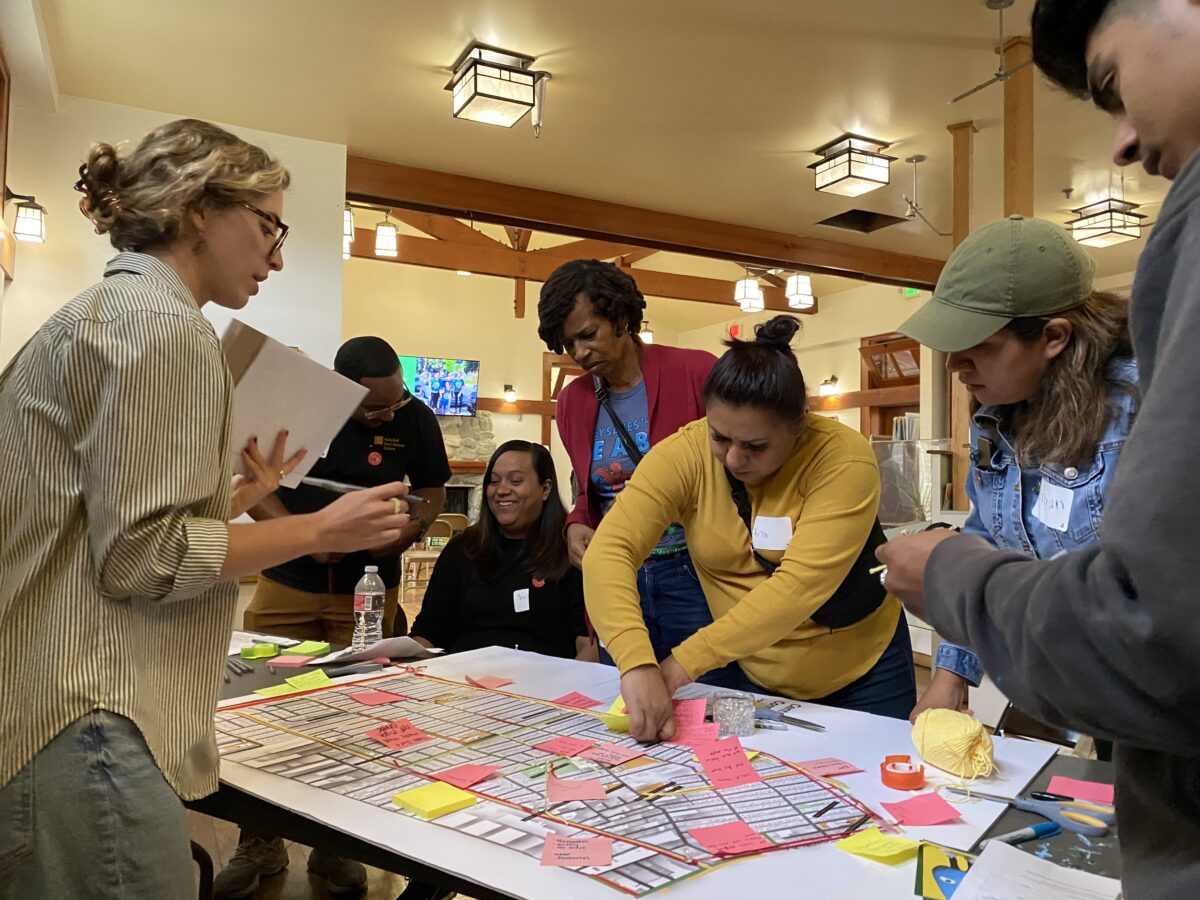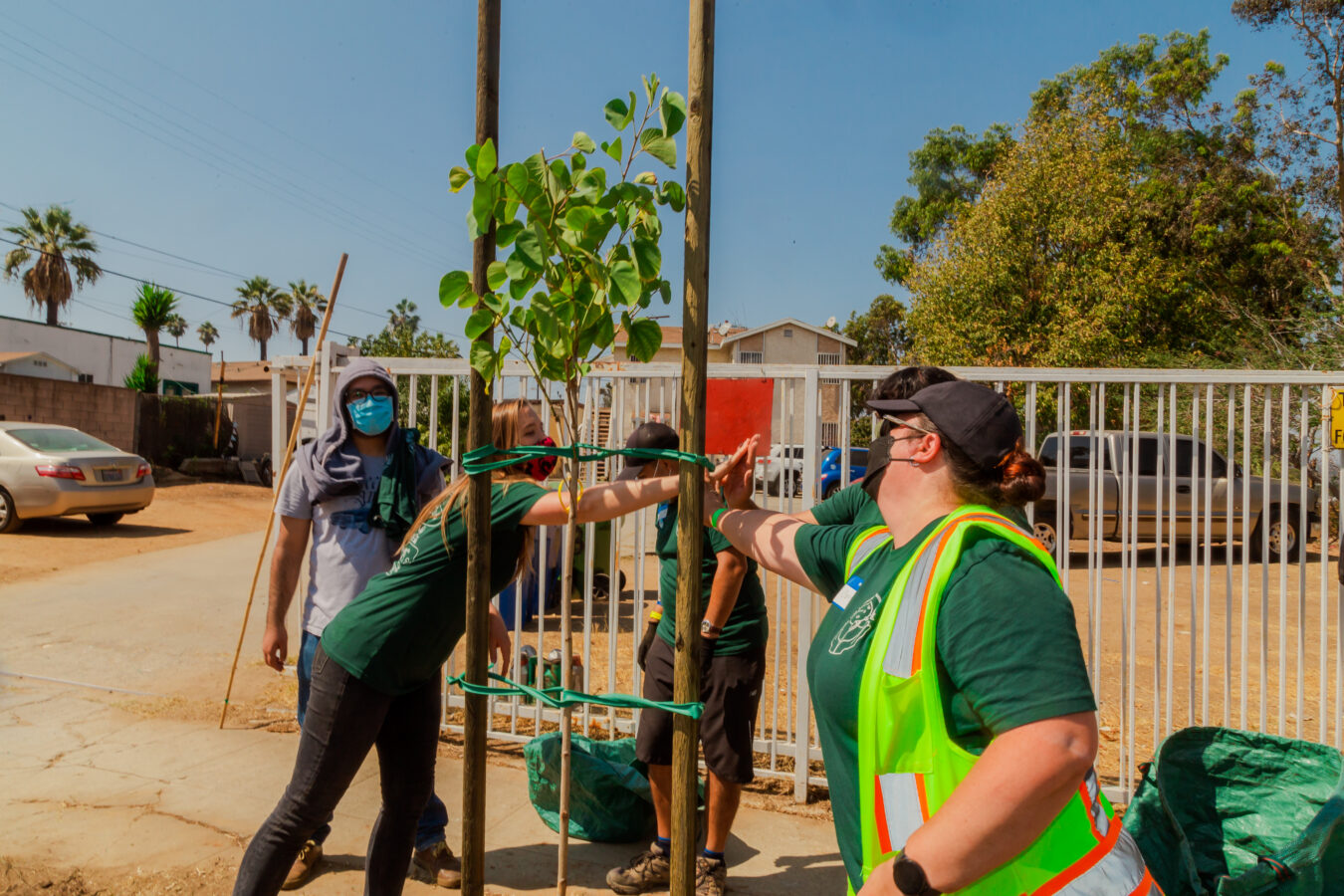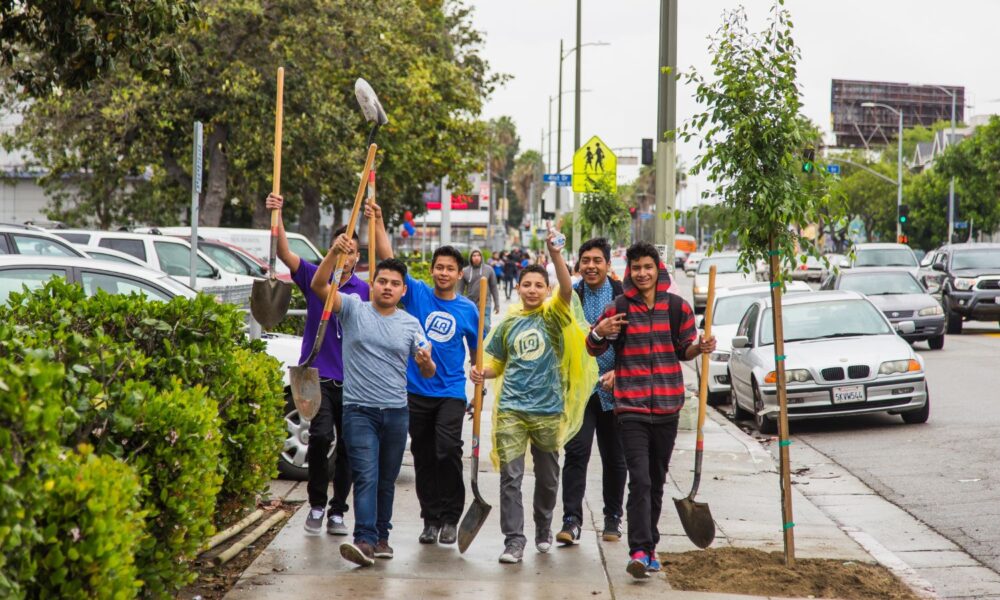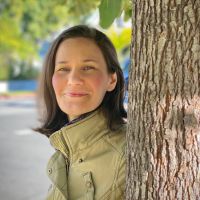Beneath the reputation of Los Angeles as a land of cars, palms, and sunshine lies a reality of stark inequalities—including access to trees and shade. Nearly 20% of L.A.’s urban forest is concentrated where only 1% of the city’s population lives, endangering lower-income communities and people of color with hotter-feeling summers and poor environmental quality. In the US and elsewhere, heat is the biggest weather-related killer, and people who live with less shade are two to three times more likely to suffer from heat-related illness and death.
From one neighborhood to the next, heat is not experienced evenly. That’s because every neighborhood is made up of a unique constellation of characteristics. Urban form shapes how much heat is retained or dissipated, and this includes factors such as patterns of development, whether housing was built before or after the adoption of energy standards, and the ratio of green space to built surfaces such as roads, parking lots, and buildings. Social factors, too, affect heat outcomes. People who rely on public transportation, live alone, or work jobs that are exposed to the elements—such as farm workers, gardeners, and postal workers—are all at greater risk. According to the California Department of Public Health, 599 people died from heat-related causes in California between 2010 and 2019, but a Los Angeles Times analysis found the true toll was likely six times higher.
Community-partnered science helps tackle the problem
To address inequities in heat-related risk, my colleagues and I have taken a community-partnered approach to better understanding the challenge of shade (in)equity and exploring solutions that cities can implement to cool neighborhoods and save lives.

In 2020, we worked with a group of community scientists in South L.A. to collect data on the impacts of trees on indoor and outdoor temperatures at their homes. Our network of community scientists contributed three months of continued data, finding that trees play an important role keeping homes cool when afternoon temperatures are at their highest. On September 6 of that year, when LA hit its all-time highest temperature of 121°F, one of our community scientists in a home with no trees or air conditioning recorded a temperature of 107°F in their living room. Such extreme temperatures are risky even for healthy people, and sustained exposure can prove deadly.
In another study, my colleagues and I found that if heat-vulnerable neighborhoods had more trees, up to half of the lives currently lost to heat could be saved.
But despite trees being a seemingly simple solution, L.A.’s extensive roadways and its extreme income and climate diversity make it challenging to grow trees to protect marginalized communities.
Shade is a right
To tackle this reality, I co-founded the L.A. Urban Forest Equity Collective — a group of forestry experts, Los Angeles City staff, community-based organizations and researchers working to address today’s legacy impacts of 20th-century policy decisions that led to some neighborhoods having fewer trees and protections from heat. For example, redlining policies prevented some neighborhoods from investing in parks.
My primary partners in this work are two other women who are powerful scientist advocates — Rachel O’Leary, Senior Partnership and Equity Supervisor at the California Department of Forestry and Science Protection, and Dana Hellman, Resilience Manager at CAPA Strategies.

About our work, Rachel says: “We believe that your zip code should not determine how much tree cover you have, the air quality you breathe, or your mental health—all of which are impacted by trees.”
With funding from Accelerate Resilience L.A. (a sponsored project of Rockefeller Philanthropy Advisors) and the U.S. Forest Service via the L.A. Center for Urban Natural Resources Sustainability, our group just released a suite of publications that redefine the problem of urban forest equity and present workable solutions that can be adopted by community members, local groups, and city leaders.
The newly published work offers a step-by-step, decision-making framework that centers equity in tree planting, and a design guidebook to help residents and planners identify opportunities for greening regardless of space constraints. We also released two hyperlocal implementation strategies co-created with community members—with green visions for the neighborhoods of Central Alameda in South L.A. and Sylmar in the San Fernando Valley.
“I live adjacent to the 210 freeway, and the air pollution is bad,” said Maria, a Sylmar resident who attended a workshop for this project. “We need trees,” she said, adding that their presence also helps bring kids outside and away from their screens.
Does your community lack shade equity?
We challenged ourselves to rethink ways to create vibrant urban spaces. We were determined to work with communities that have been told for decades that there are never enough resources to give them the same environmental benefits that wealthier neighborhoods enjoy, and to find pathways to address the barriers. And we did. Our recommendations are now being incorporated by the City in its planning and policy efforts.

If you are a resident, advocate, or local decision-maker looking to engage your community on this topic, we encourage fostering diverse partnerships and building upon existing and emerging resources and knowledge. Any efforts to advance equity will benefit from the inclusion of multiple perspectives, experiences, and contributions.
We also encourage any efforts to grow shade to account for multiple facets of equity, not just distributional. While the physical distribution of trees is significant, we recommend that practitioners consider opportunities to integrate recognitional and procedural equity into their work as well.
Recognitional equity could mean conducting background research on socio-environmental conditions to better understand ongoing challenges and their root causes, while meaningfully engaging residents when identifying greening interventions to capture and address their goals, needs, and concerns. Procedural equity includes transparency in decision making, access to information and decision making for community members, and the fair, impartial distribution of services.
The good news is that these ideas are spreading from advocates and practitioners, to local and state governments. And using your voice, you can help make shade equity a reality in your city or town.

